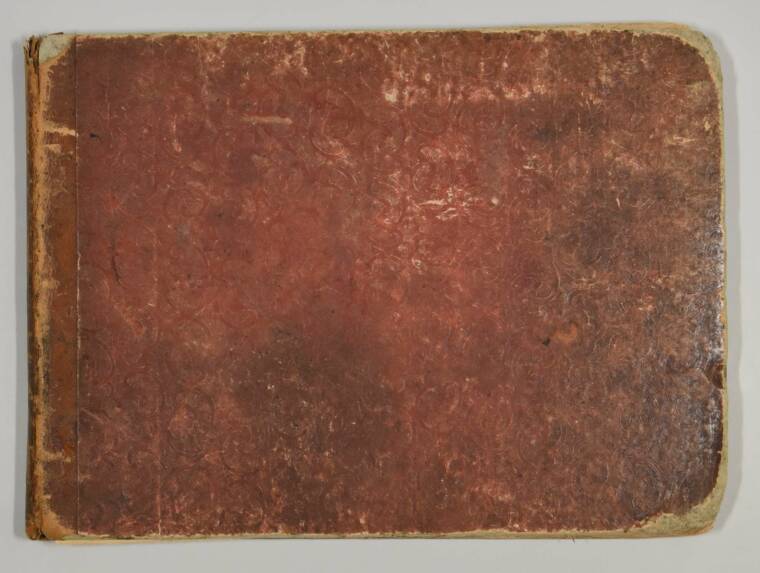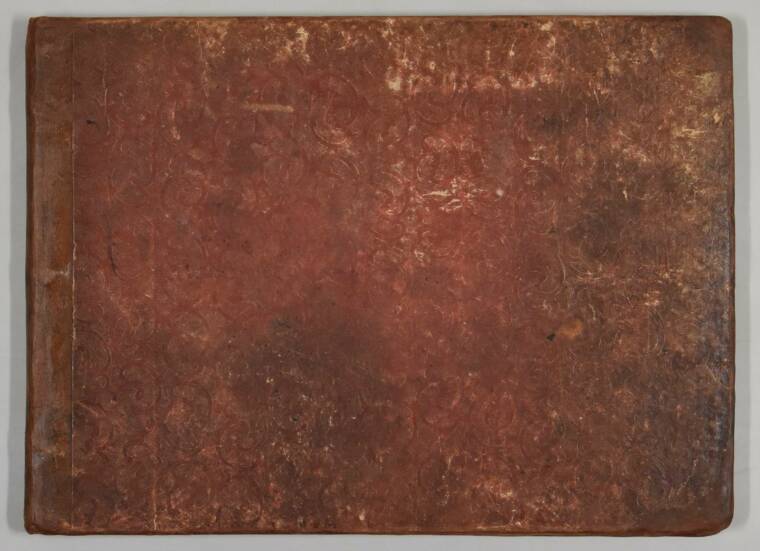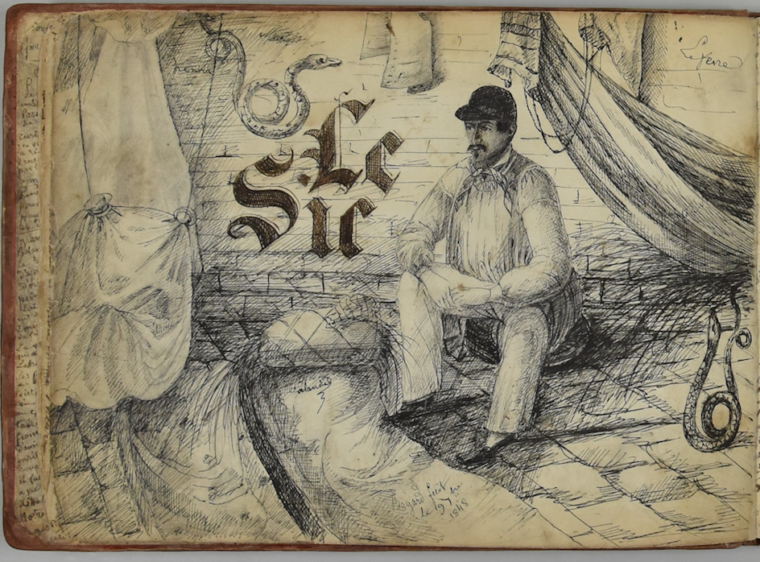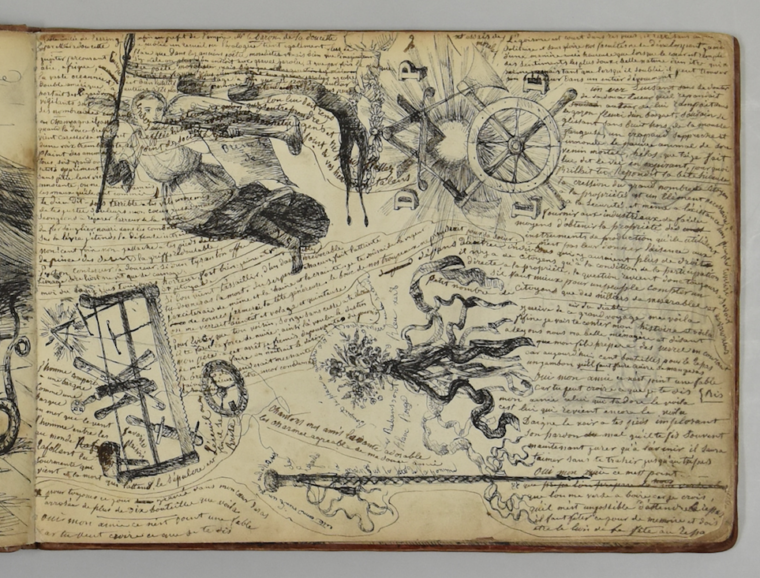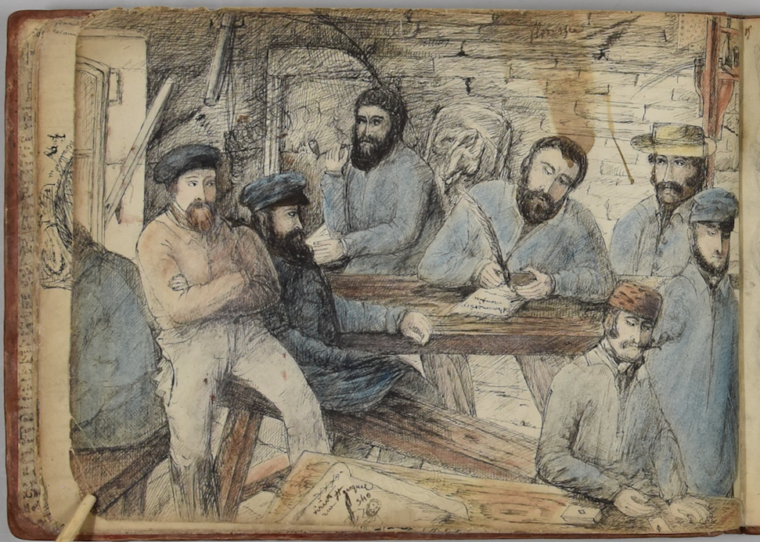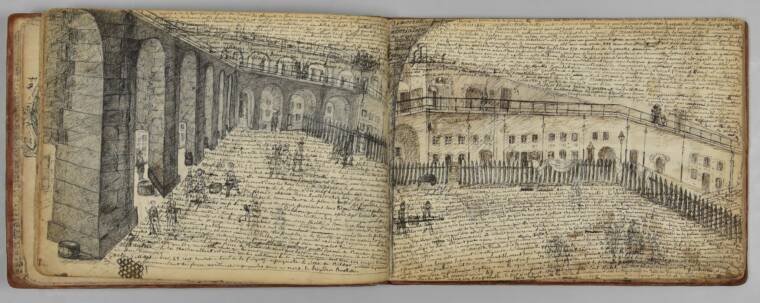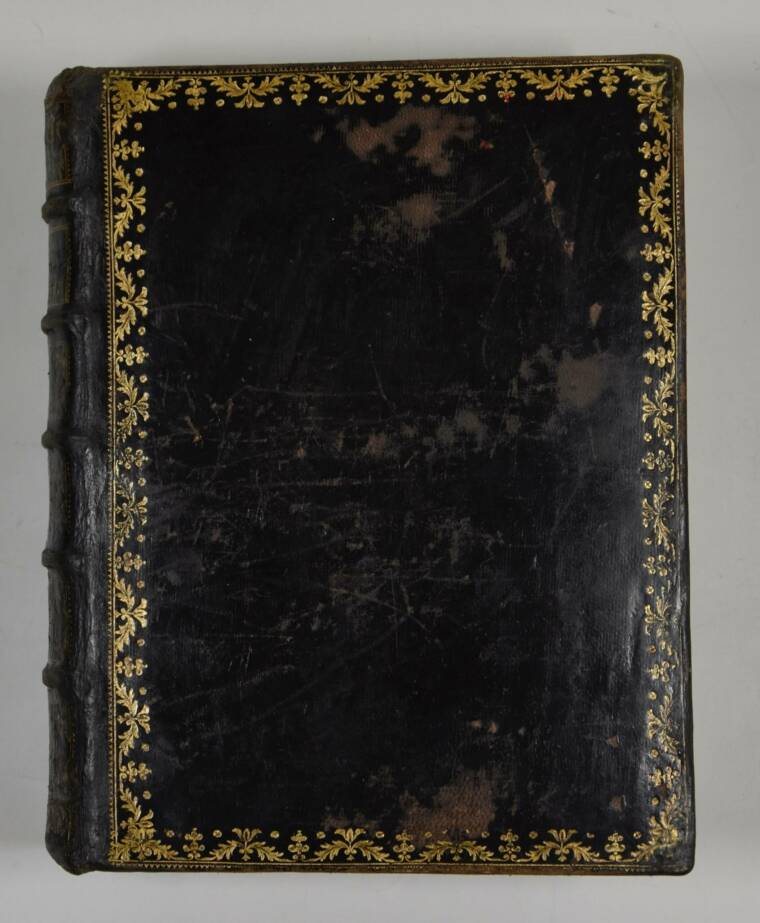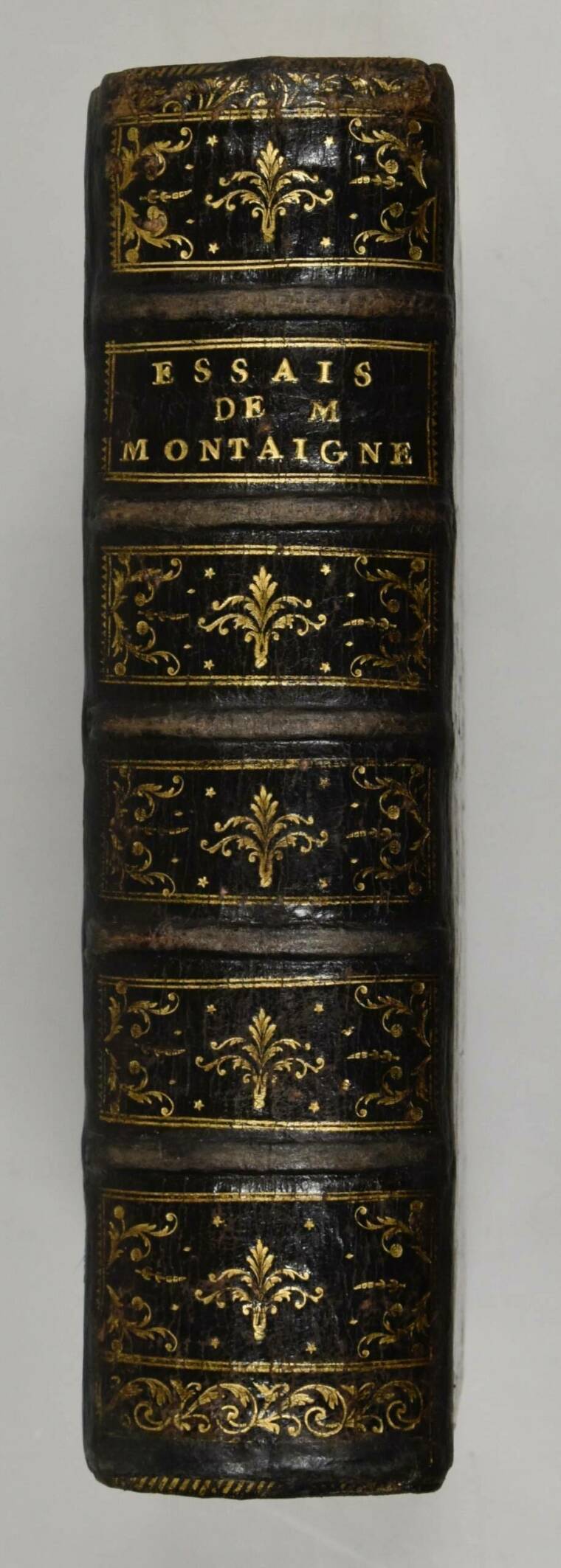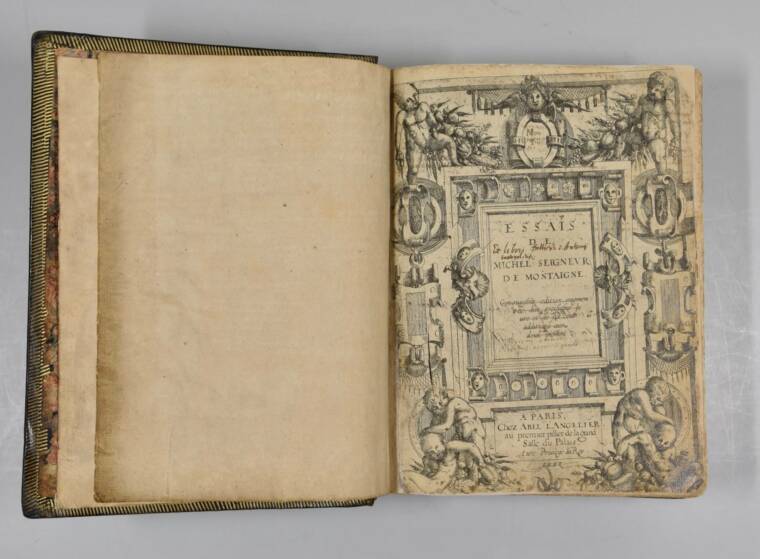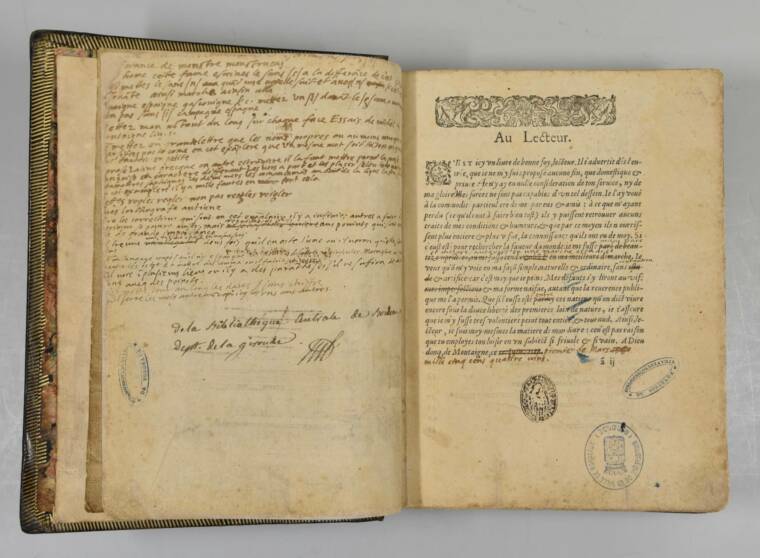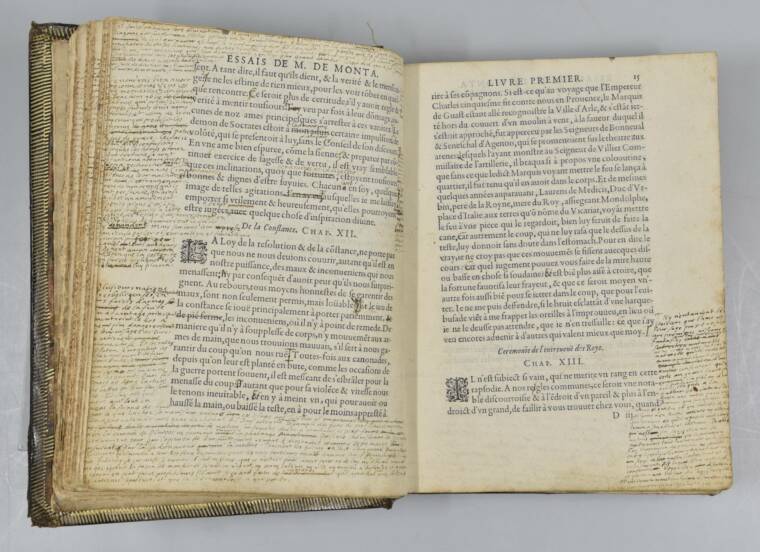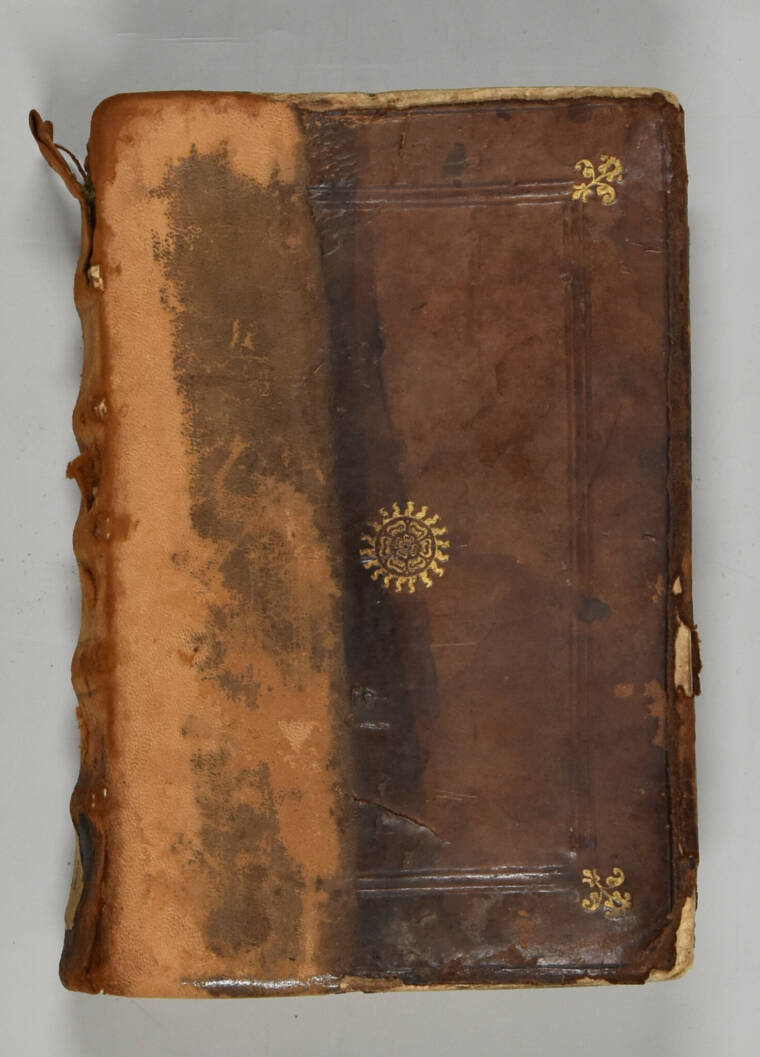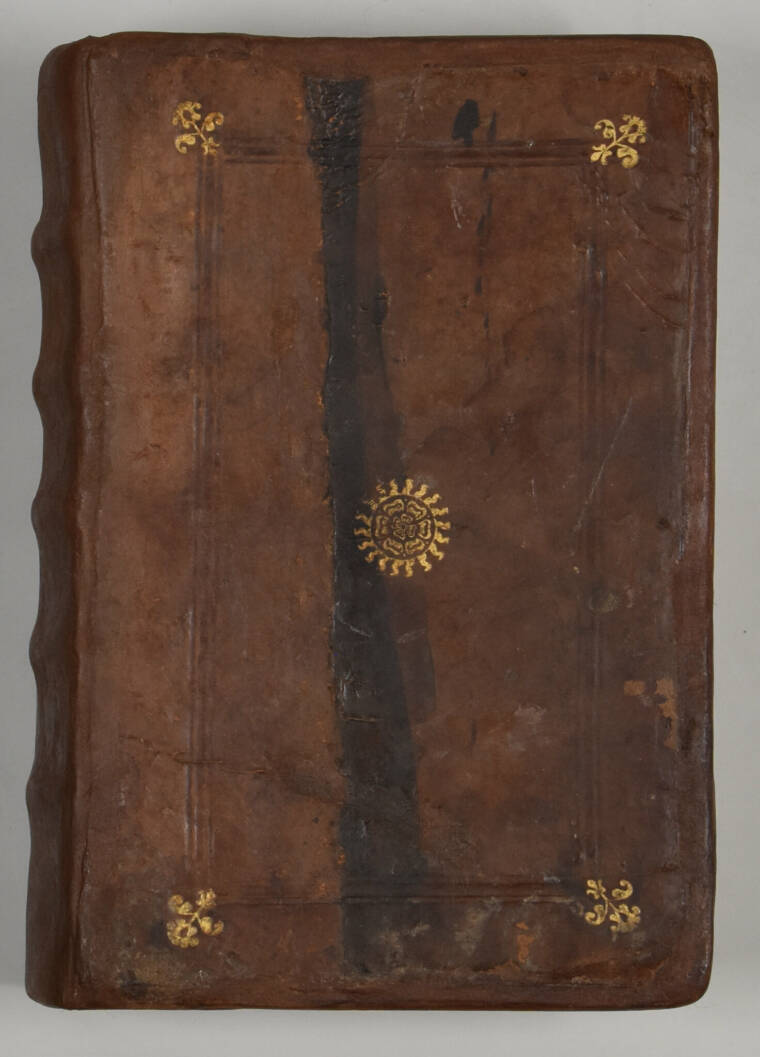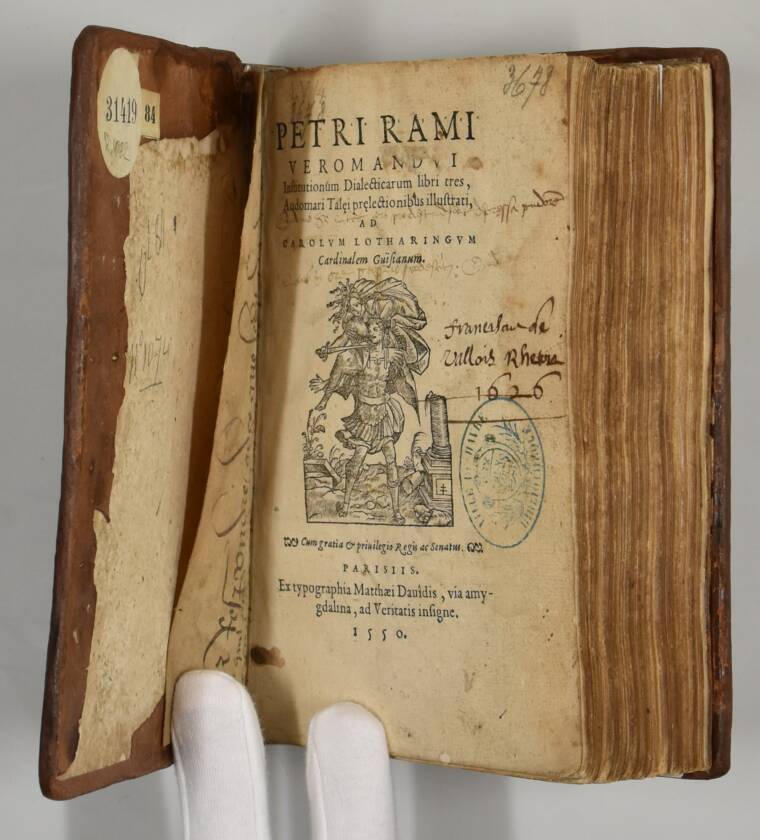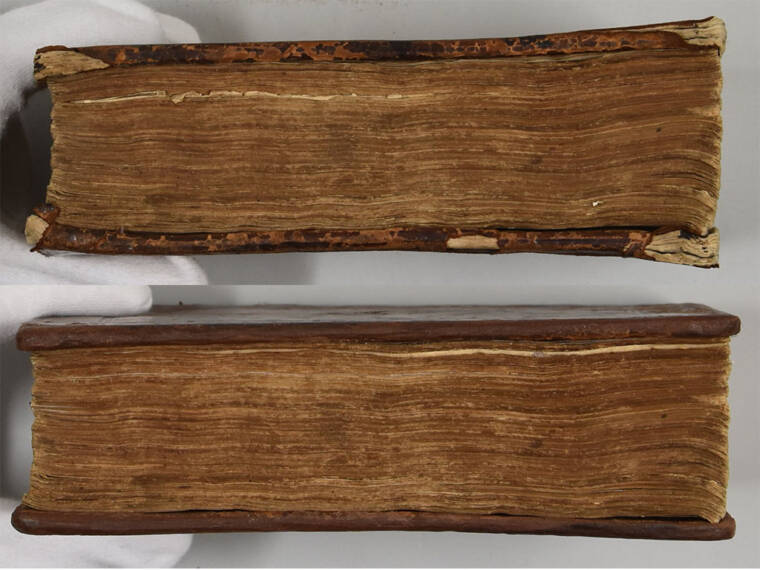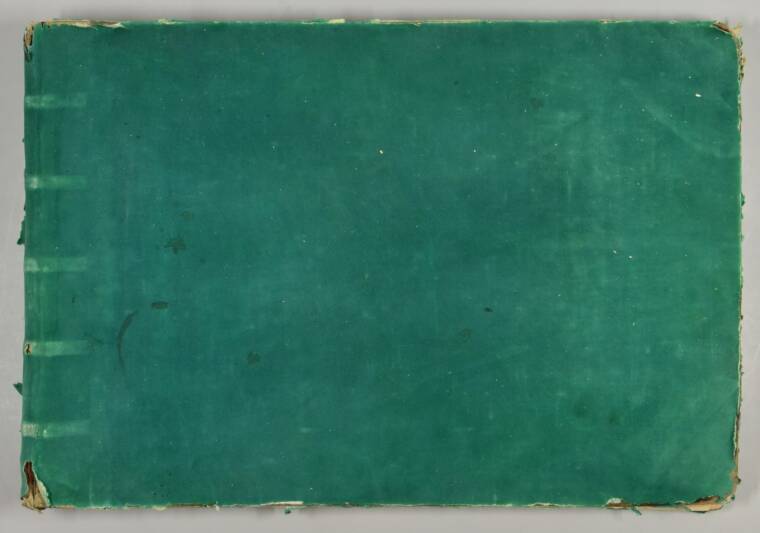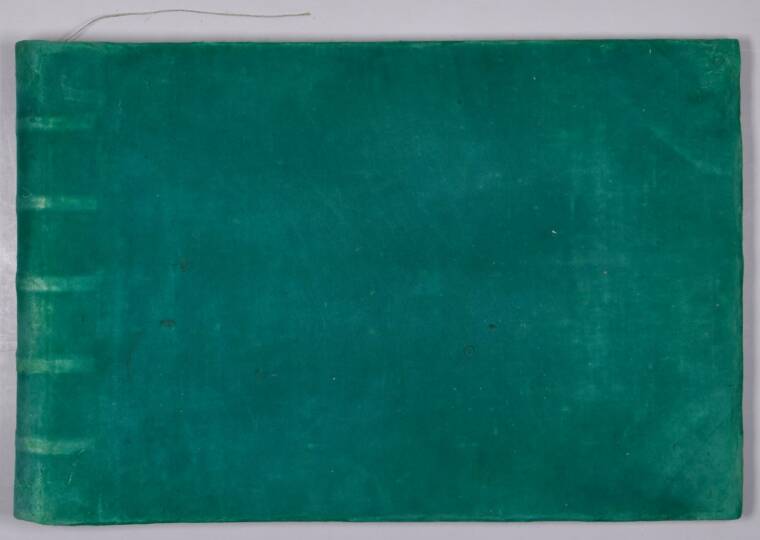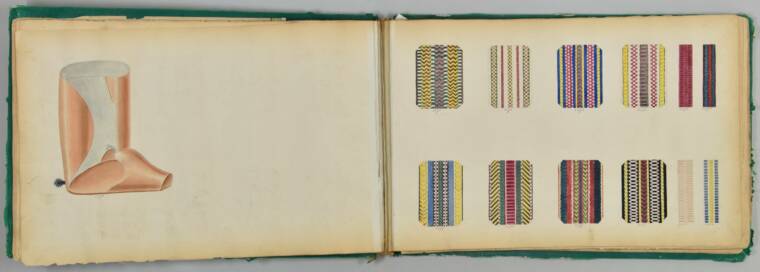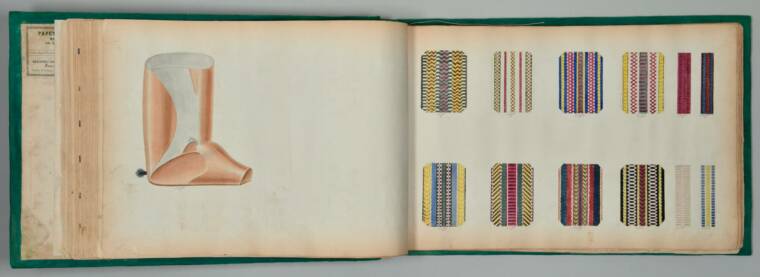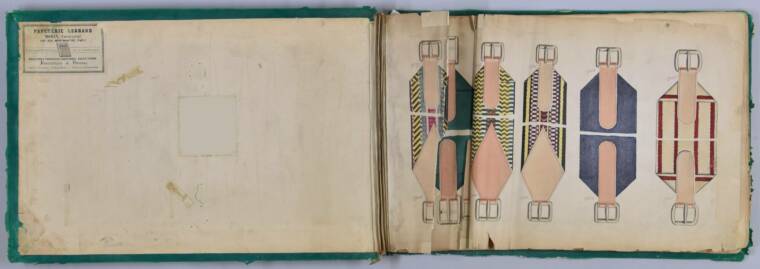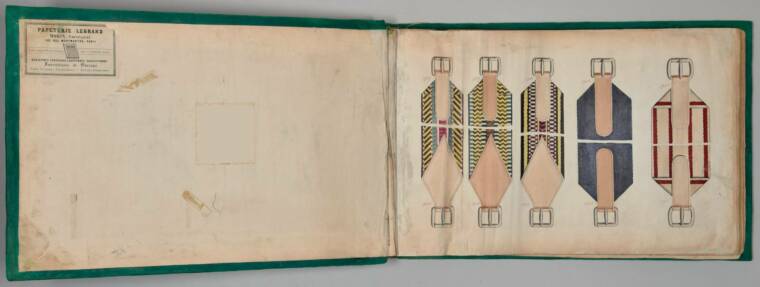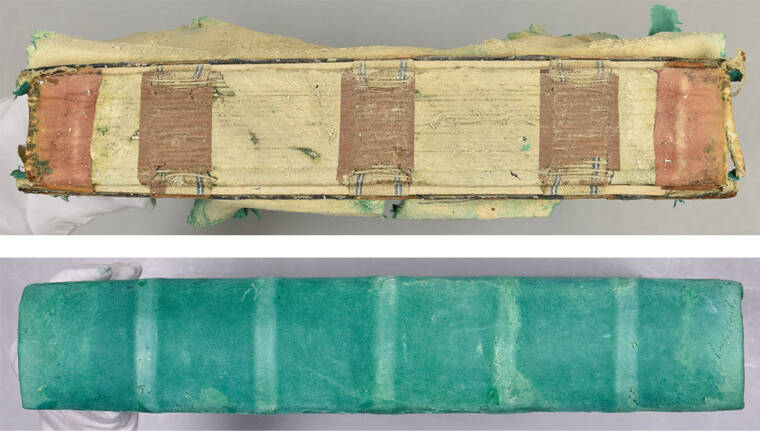Book restoration
Manuscripts or Printed Books, books can appear as either paperback or hardbound. The materials they are made of vary (paper, leather, fabric, canvas, parchment, cardboard, wood…) and warrant close observation, as well as consideration of their mechanical stress, to implement the most suitable treatment.
Restoration of Joseph Bagard’s Notebook, ca. 1850
Bibliothèque Jacques Prévert, Cherbourg (2022)
Restoration of Joseph Bagard’s Notebook, ca. 1850
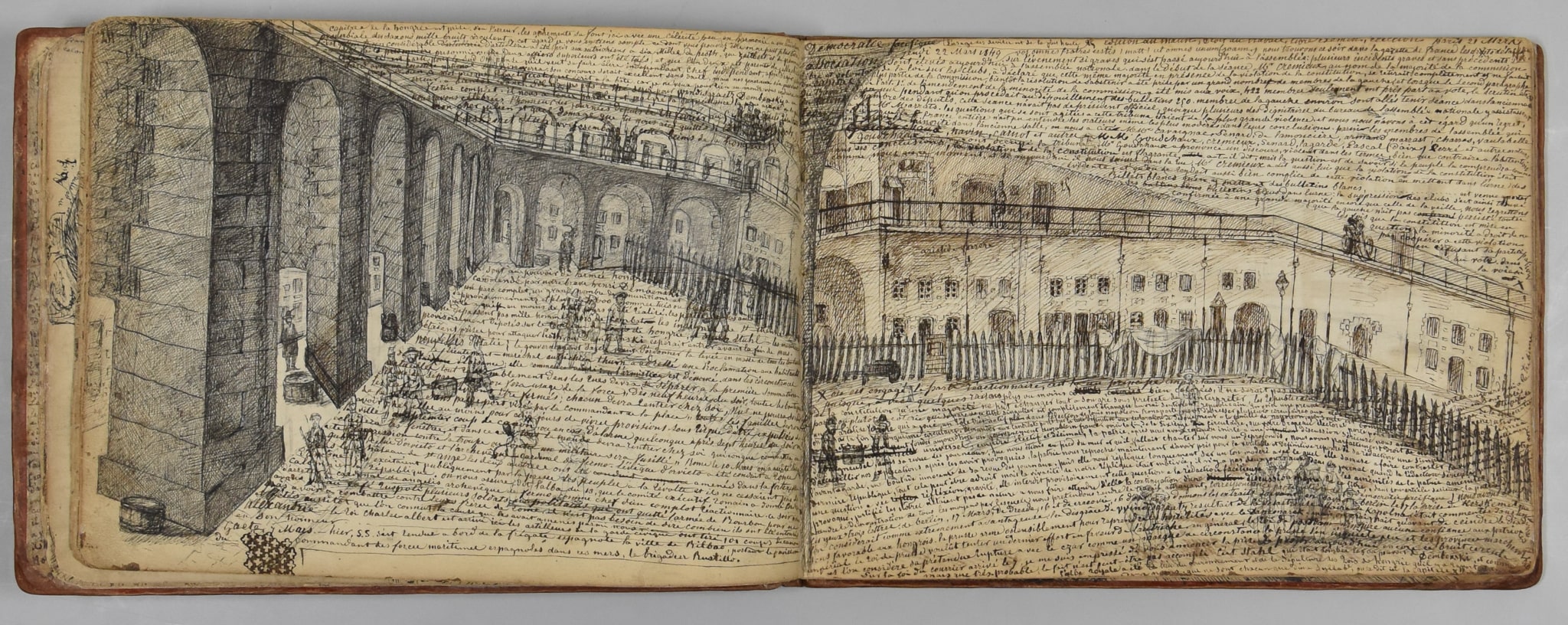
Joseph Bagard’s Notebook
Identification
Reference Number: Ms 678 B
Description: Sketchbook
Author: Joseph Bagard
Date: Around 1850
Dimensions: 26 x 19 x 1.5 cm
Binding Type: Half leather (sheep), boards covered with red embossed paper. Notebook made by Méridias, Paris.
Medium: Industrially manufactured vellum paper
Technique: Manuscript in black or brown ink (iron gall ink), newspaper clippings pasted in
Illustrations: Drawings in graphite pencil, pen and ink, colored pencils, charcoal, watercolor
Detail
Imprisoned at Fort du Hommet, a military structure located off the coast of Cherbourg, likely due to the events of 1848, Joseph Bagard filled every page of his notebook with notes and sketches.
The leaves were partially detached and needed to be reordered. The binding of this small notebook showed signs of use.
Reattaching the leaves in their original order and restoring the leaves and the binding allowed the notebook to be digitized and preserved.
Restoration of the “Exemplaire de Bordeaux,” Fifth Edition of Michel de Montaigne’s Essais, by Abel L’Angelier, Paris, with the Author’s Marginal Notes, 1588
Mériadeck Library, Bordeaux (2019)
Restoration of the “Exemplaire de Bordeaux”
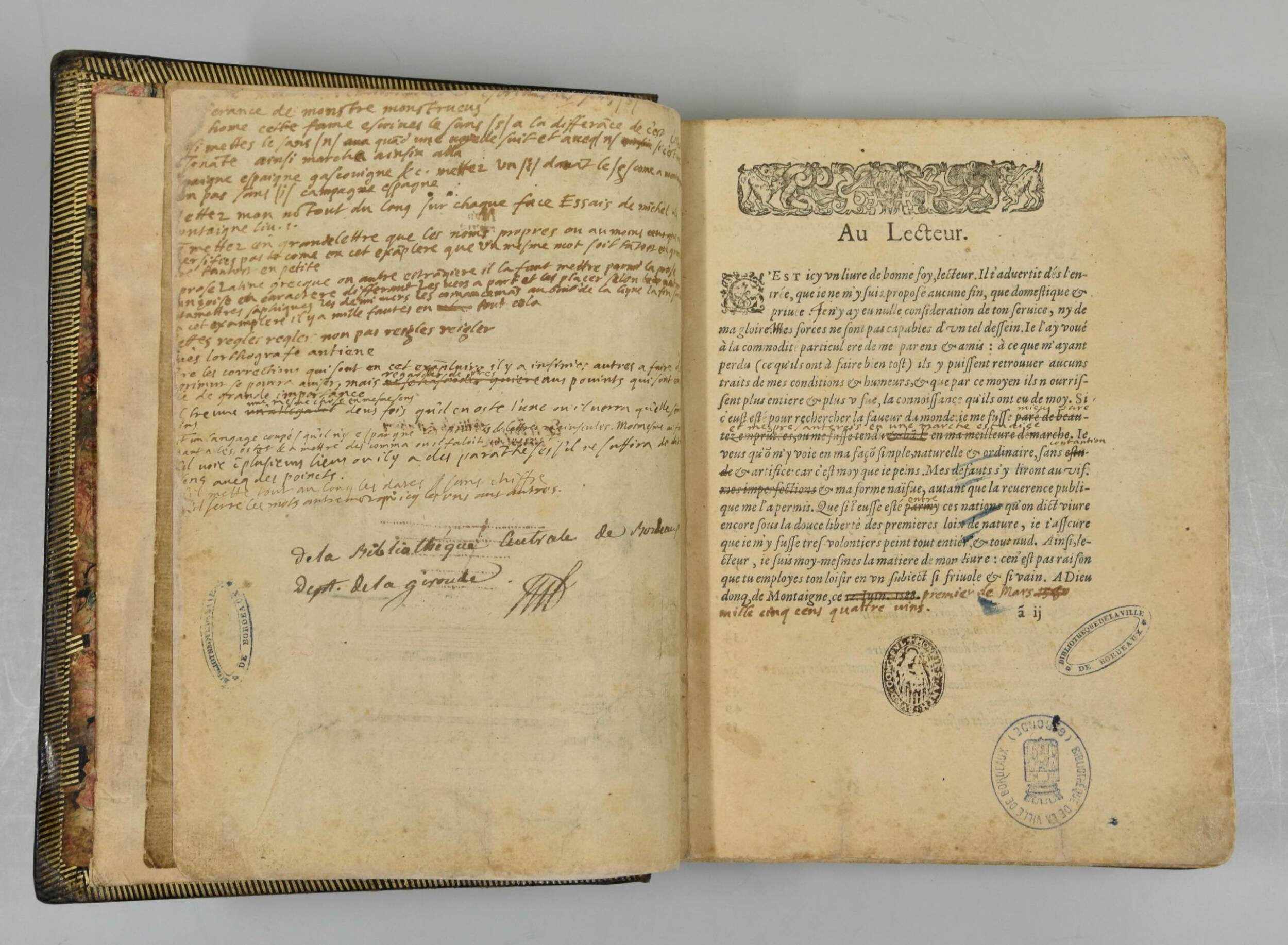
Exemplaire de Bordeaux
Identification
Reference Number: S1238
Title: Essais de Michel seigneur de Montaigne. Cinquième édition, augmentée d’un troisième livre et de six cents additions aux deux premiers
Author: Michel de Montaigne (1533-1592)
Printer: Abel L’Angelier, Paris
Date: 1588Dimensions: 26.5 x 20 x 7 cm
Binding Type: Black sheepskin leather, blind-stamped with long grain pattern
Detail
As part of its candidacy for UNESCO’s Memory of the World program, the Exemplaire de Bordeaux underwent a complete material study and restoration.
Printed by Abel L’Angelier in Paris in 1588 and fully annotated by Michel de Montaigne, this work is the only manuscript evidence of Montaigne’s work on the Essais.
The complete material study dated the trimming of its edges, which cut off some of the philosopher’s marginal notes, to the early 17th century, and its binding to 1807. For more information, see the article published in Montaigne Studies (2023).
BARBE Coralie, BENELLI Jacques, TYRLIK Julie, “À bords perdus : éléments pour une reconstitution de l’histoire matérielle de l’Exemplaire de Bordeaux”, Montaigne Studies, vol. XXXV, 2023, p. 177-193.
Restoration of a Dialectic Book by Pierre de La Ramée and Omer Talon, Institutionum dialecticarum libri tres, 1550
Municipal Library, Havre (2021)
Restoration of a Dialectic Book by Pierre de La Ramée and Omer Talon, Institutionum dialecticarum libri tres, 1550
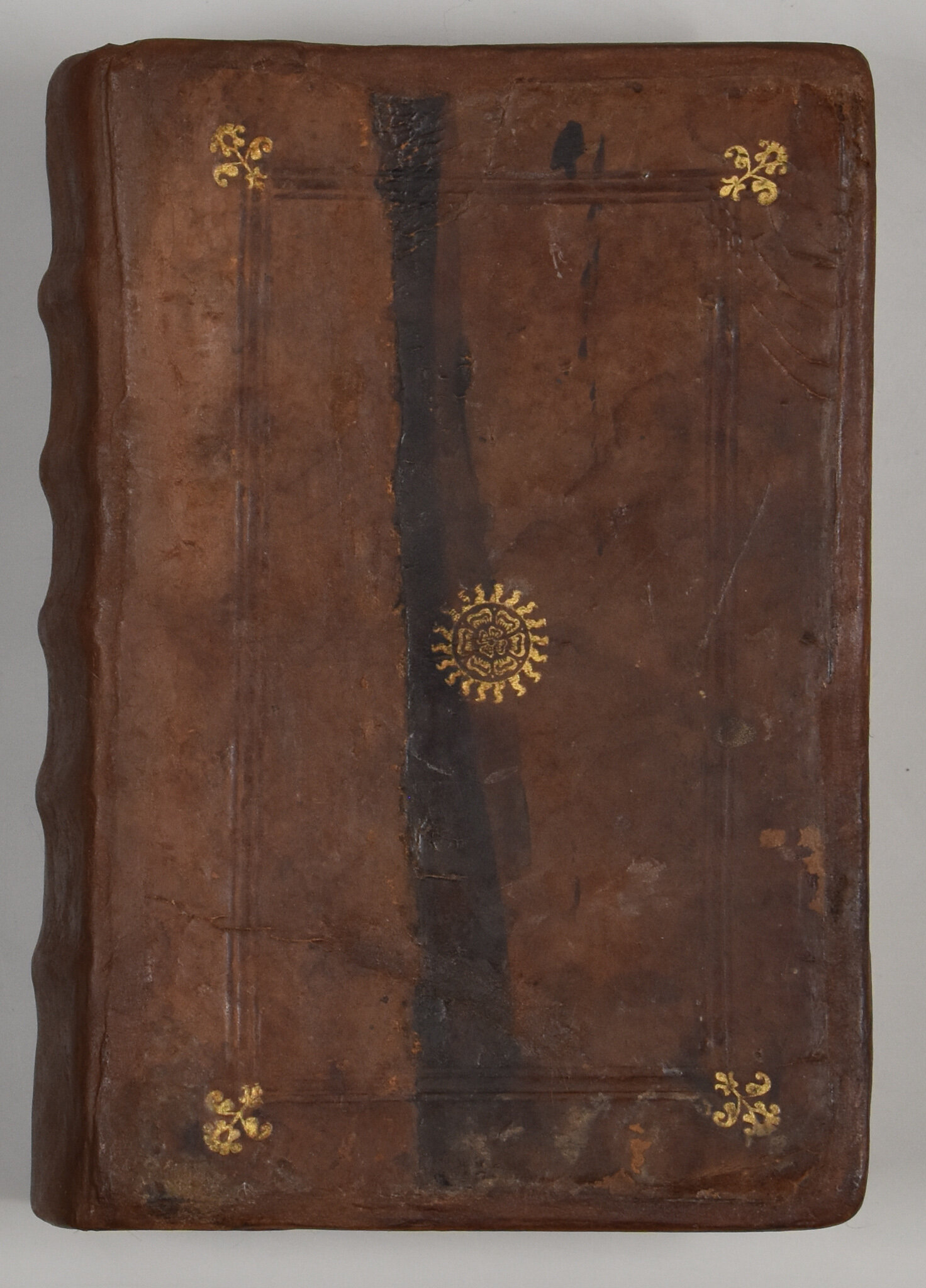
Institutionum dialecticarum
Identification
Reference Number: R1082
Author: Pierre de La Ramée
Title: Institutionum dialecticarum libri tres
Date: 1550
Place of Printing: Paris, by Mathieu David
Dimensions: 17 x 11.5 x 5 cm
Binding Type: Full calf
Decoration: Double blind-stamped framing, corner florets, and a central medallion in goldSewing Type: Sewn on five split leather straps
Medium: Laid paper made from rag pulp
Detail
This work by philosopher Pierre de La Ramée, commented on by his disciple Omer Talon, is the 1550 edition of his Dialectics. Its binding, a full brown calf with double blind-stamped borders, corner florets, and a hot-stamped central medallion, is contemporary to the edition. It comes from the Abbey of Fécamp.
In the 19th century, its restoration involved the addition of a piece of sheepskin over its spine, probably to keep its detached boards together. Removing this now ineffective and unattractive piece restored the book’s usability and visual coherence.
Restoration of a Pedlar’s Album, First Half of the 19th Century
Private collection (2022)
Restoration of a Pedlar’s Album for a Private Collection
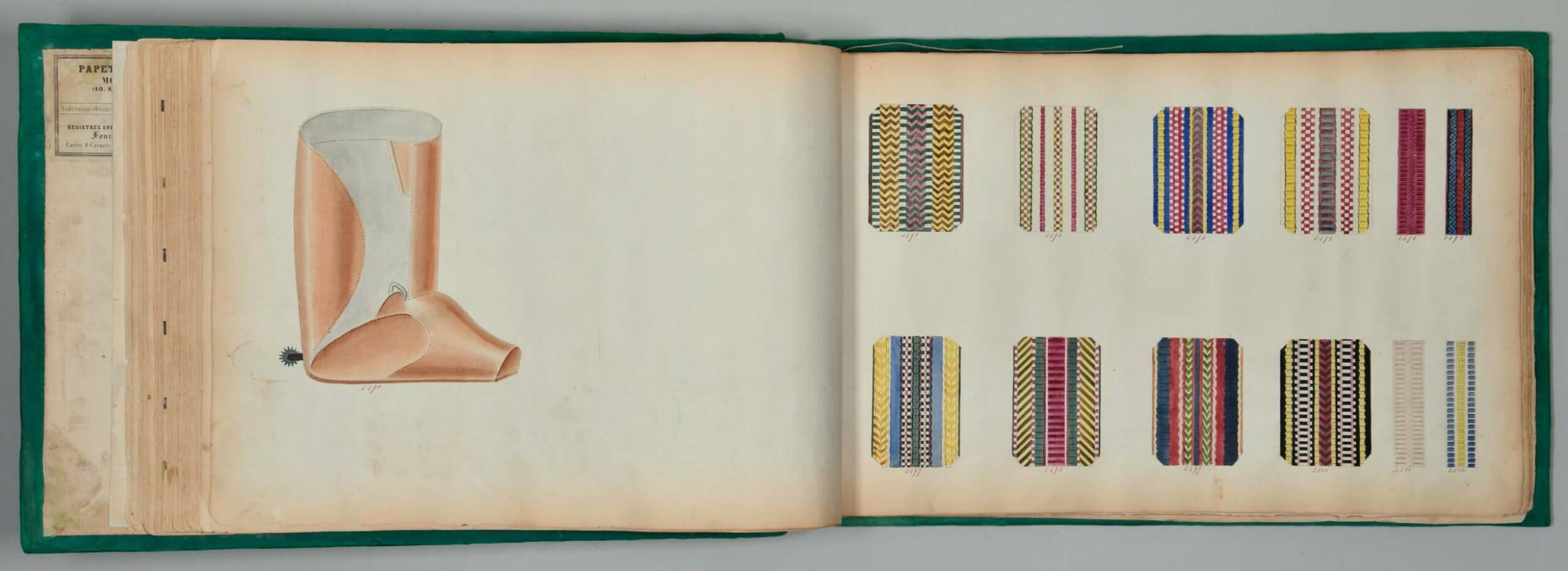
Pedlar’s Album
Identification
Description: Pedlar’s Album
Date: 1806 – 1850
Binding Type: Full green split leather
Sewing Type: Sewn on three ribbons
Medium: Industrially manufactured vellum paper
Technique: Watercolor and handwritten notes in ink or pencil
Dimensions: 57 x 38 x 7 cm
Detail
This album contains a collection of watercolor and graphite pencil drawings, either pasted onto the pages or drawn directly on them. It is a peddler’s album of textile patterns and high-quality saddlery pieces.
Completely covered in split leather dyed green, it showed signs of wear mainly due to its use. The leaves were thoroughly dusted, consolidated, and flattened where necessary, and the missing parts of the binding were filled with alum-tanned leather dyed to match the original color.
